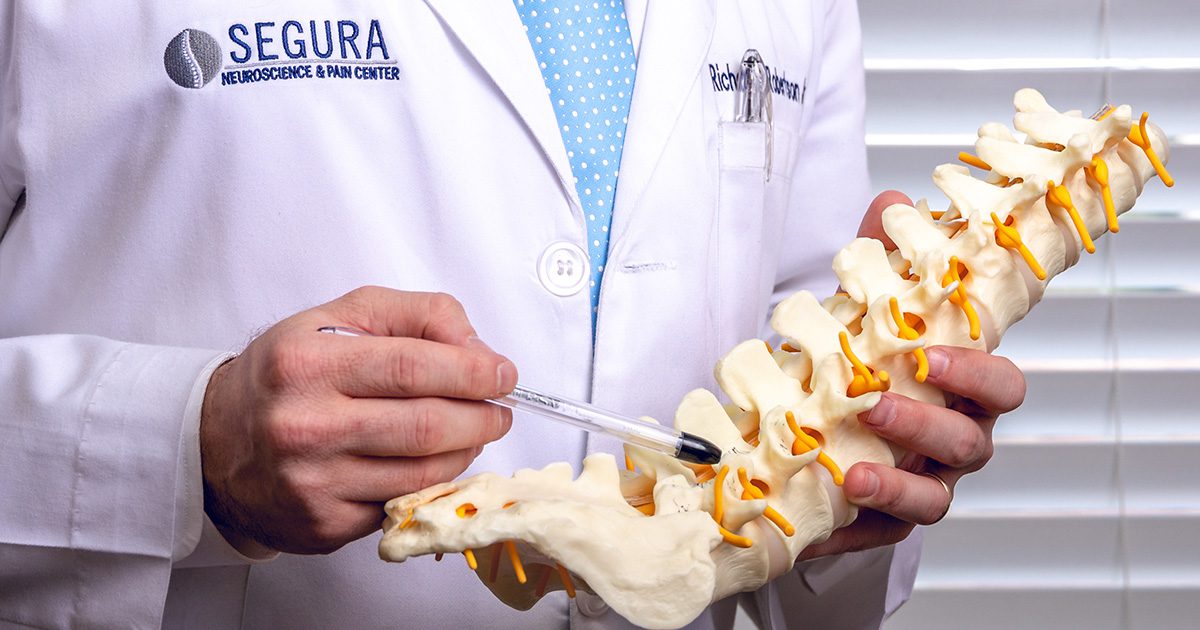
What is Facet Joint Syndrome?
As we age, shoulder problems are a very common cause of pain, with nearly a quarter of all people experiencing some sort of discomfort. The problem is more common in women than men, with about 25% of women being affected and 17% of men.
Common causes of shoulder joint pain can be arthritis, bursitis, and a condition called suprascapular neuropathy. Irritation of the suprascapular nerve, a major nerve which branches from the cervical spine and through the shoulder, can be caused by direct nerve compression from a paralabral cyst, a bone tumor, or a soft tissue tumor. Past trauma to the shoulder joint, as well as some autoimmune conditions may also contribute to chronic shoulder pain.
What are the Symptoms?
Facet syndrome may exist undetected until something happens to trigger symptoms. It can present as pain in the neck or lower back and can radiate to other nearby areas.
Cervical facet syndrome can be accompanied by pain in the base of the skull, neck, upper back or shoulders. Pain between the shoulder blades can occur. Patients may feel tingling, weakness, or pain in the hand and arm. Headaches, typically located in the back of the head, may also be a symptom. As can swelling and tenderness at the site of the inflamed facet joint.
Lumbar facet syndrome can be characterized by pain or tenderness in lower back. Local tenderness/stiffness alongside the spine in the lower back. Pain, stiffness or difficulty with certain movements (such as standing up straight or getting up from a chair). Pain may increase as you bend near the affected joint and may decrease with movements that relieve the pressure on the joint.
"Facet syndrome may exist undetected until something happens to trigger symptoms. It can present as pain in the neck or lower back and can radiate to other nearby areas. "Richard C. Robertson, MD
Cervical Facet Joint Syndrome
When irritation of the facet joints occurs in the neck, it is called cervical facet joint syndrome.
Cervical facet joint syndrome has a number of potential causes, such as repetitive movement, trauma, or arthritic changes. It often develops after a direct spinal injury. It can also occur as a secondary condition for patients also suffering from degenerative disc disease. When a cervical disc is damaged or loses cushioning, the facet joint may lose the necessary space to move (joint degeneration). Another common factor contributing to the development of cervical facet joint syndrome is poor posture. The natural curve of the neck, referred to as the cervical lordosis, is designed to handle only a certain amount of sustained stress. When this curve is exaggerated, excessive stress can be placed on the facet joints, causing inflammation or degeneration.
In most cases, cervical facet joint pain can be treated through non-surgical methods. However, for more severe cases, treatment options may include:
Cervical facet joint pain often has symptoms similar to many other spinal conditions, so an accurate diagnosis is crucial to creating a treatment plan that gives you maximum relief.
"Cervical facet joint pain often has symptoms similar to many other spinal conditions, so an accurate diagnosis is crucial to creating a treatment plan that gives you maximum relief."Ronald C. Segura, MD
Lumbar Facet Joint Syndrome
Irritation occurring in the facet joints of the lower back is called lumbar facet joint syndrome.
Repetitive movement, trauma, or arthritic changes can all potentially cause lumbar facet joint syndrome. It often develops after an injury to the lower back. Like the cervical spine, lumbar facet joint pain may also occur as a secondary condition for patients suffering from degenerative disc disease. When a vertebral disc in the lumbar spine is damaged or loses cushioning, the lumbar facet joint is allowed less space to move, resulting in joint degeneration. Another common factor contributing to the development of lumbar facet joint syndrome is poor posture. The natural curve of the lower back, referred to as the lumbar lordosis, is designed to handle only a certain amount of sustained stress. When this curve is exaggerated, excessive stress can be placed on the lumbar facet joints, causing inflammation, degeneration, and pain.
In most cases, lumbar facet joint pain can be treated through non-surgical methods. However, for more severe cases, treatment options may include:
- Pain Pump
- Lumbar Medial Branch Blocks
- Lumbar Facet Radiofrequency Neurotomy
Like the cervical facet joints, lumbar facet joint pain often has symptoms similar to many other back pain conditions, so an accurate diagnosis is crucial to creating a treatment plan that gives you maximum relief.
"Like the cervical facet joints, lumbar facet joint pain often has symptoms similar to many other back pain conditions, so an accurate diagnosis is crucial to creating a treatment plan that gives you maximum relief."Richard C. Robertson, Jr., MD
Why See a Chronic Pain Specialist?
About Dr. Segura

Ronald C. Segura, MD
Ronald C. Segura, MD is is double board certified in PM&R and Interventional Spine & Pain Medicine.
Dr. Segura attended LSU School of Medicine in New Orleans and completed a four-year residency training program in Physical Medicine & Rehabilitation. Dr. Segura's philosophy utilizes a multidisciplinary approach to healing pain. His treatment plan focuses on reducing pain and improving functional ability, which enhances one's quality of life.
About Dr. Robertson

Richard C. Robertson, Jr., MD
Richard C. Robertson, MD is is double board certified in anesthesiology and interventional pain management.
Dr. Robertson served as a board member of the Mississippi State Medical Association and was chosen to receive both the Virginia Stansel Tolbert Award and the Carl Gustav Evers Award for outstanding leadership. He chose to further specialize his training by completing an ACGME-accredited fellowship in interventional pain management at Wake Forest University Baptist Medical Center in Winston-Salem, NC.
This website is not intended to provide specific medical advice, medical diagnosis, opinion, treatment or services to you or to any other individual. Through this website and links to other websites, Segura Neuroscience & Pain Center provides general information for educational purposes only. The information provided in this site is not a substitute for medical or professional care. You should not use this information in place of the advice of your physician or other healthcare provider. Segura Neuroscience & Pain Center is not liable or responsible for any advice, course of treatment, diagnosis or any other information, services or product you obtain through this website.

